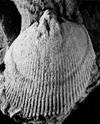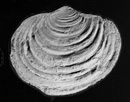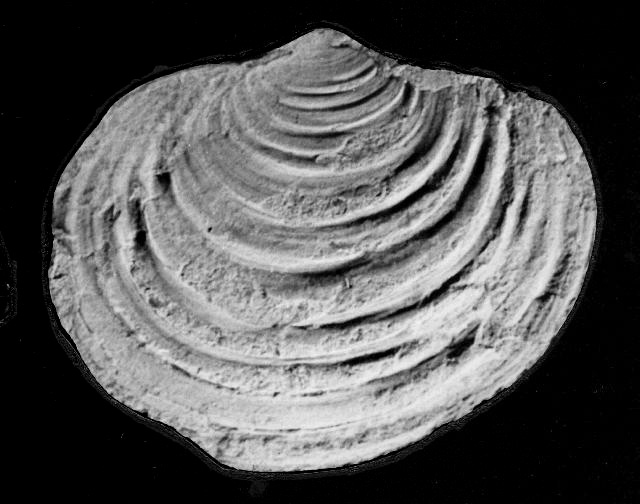Faunal realms
Great numbers of animal and plant species have been introduced, intentionally or not, since the arrival of the Europeans in North America.
 (80 kb) Ships travelling between the two worlds sometimes carried little passengers—insects, rodents, spores or seeds—that found favourable living conditions on the new continent and prospered, sometimes to the detriment of native species.
(80 kb) Ships travelling between the two worlds sometimes carried little passengers—insects, rodents, spores or seeds—that found favourable living conditions on the new continent and prospered, sometimes to the detriment of native species.
But well before the arrival of humans, similar situations often arose as a result of continental “drift”. No need for ships to introduce species when distant continents could approach sufficiently close for species to migrate from one to another!

 (52 kb)The fauna of the Lower Devonian were very provincial, with each region of the globe having its own characteristic faunal assemblages. Paleontologists have reconstructed these ancient faunal “provinces”, mainly through the study of invertebrates like brachiopods. The faunal provinces are grouped into a few main “realms”, such as the Old World Realm and the Eastern Americas Realm. The northern part of Western Europe was included in the Rhenish Province of the Old World Realm, while the Gaspé region and a large part of eastern North America were characterized by fauna of the Appalachian Province of the Eastern Americas Realm.
(52 kb)The fauna of the Lower Devonian were very provincial, with each region of the globe having its own characteristic faunal assemblages. Paleontologists have reconstructed these ancient faunal “provinces”, mainly through the study of invertebrates like brachiopods. The faunal provinces are grouped into a few main “realms”, such as the Old World Realm and the Eastern Americas Realm. The northern part of Western Europe was included in the Rhenish Province of the Old World Realm, while the Gaspé region and a large part of eastern North America were characterized by fauna of the Appalachian Province of the Eastern Americas Realm.
In Devonian time, changes in the configuration of the continents and oceans promoted faunal exchanges between provinces and realms. As an example, the closure of the Iapetus Ocean during Lower Devonian time facilitated the introduction of Rhenish species along the margin of the Appalachian Province. By the Middle Devonian, many immigrant species from the Old World were highly dispersed in the Eastern Americas Realm. The fauna of the Gaspé Sandstone Group, which span the end of the Lower Devonian to the beginning of Middle Devonian time, document the passage of Rhenish Old World species through the Gaspé Basin during their migration to North America.

 (80 kb) Ships travelling between the two worlds sometimes carried little passengers—insects, rodents, spores or seeds—that found favourable living conditions on the new continent and prospered, sometimes to the detriment of native species.
(80 kb) Ships travelling between the two worlds sometimes carried little passengers—insects, rodents, spores or seeds—that found favourable living conditions on the new continent and prospered, sometimes to the detriment of native species. But well before the arrival of humans, similar situations often arose as a result of continental “drift”. No need for ships to introduce species when distant continents could approach sufficiently close for species to migrate from one to another!

 (52 kb)The fauna of the Lower Devonian were very provincial, with each region of the globe having its own characteristic faunal assemblages. Paleontologists have reconstructed these ancient faunal “provinces”, mainly through the study of invertebrates like brachiopods. The faunal provinces are grouped into a few main “realms”, such as the Old World Realm and the Eastern Americas Realm. The northern part of Western Europe was included in the Rhenish Province of the Old World Realm, while the Gaspé region and a large part of eastern North America were characterized by fauna of the Appalachian Province of the Eastern Americas Realm.
(52 kb)The fauna of the Lower Devonian were very provincial, with each region of the globe having its own characteristic faunal assemblages. Paleontologists have reconstructed these ancient faunal “provinces”, mainly through the study of invertebrates like brachiopods. The faunal provinces are grouped into a few main “realms”, such as the Old World Realm and the Eastern Americas Realm. The northern part of Western Europe was included in the Rhenish Province of the Old World Realm, while the Gaspé region and a large part of eastern North America were characterized by fauna of the Appalachian Province of the Eastern Americas Realm.In Devonian time, changes in the configuration of the continents and oceans promoted faunal exchanges between provinces and realms. As an example, the closure of the Iapetus Ocean during Lower Devonian time facilitated the introduction of Rhenish species along the margin of the Appalachian Province. By the Middle Devonian, many immigrant species from the Old World were highly dispersed in the Eastern Americas Realm. The fauna of the Gaspé Sandstone Group, which span the end of the Lower Devonian to the beginning of Middle Devonian time, document the passage of Rhenish Old World species through the Gaspé Basin during their migration to North America.

Title: Rhenorensselaeria
Author: Parc national de Miguasha
Sources: Parc national de Miguasha
Year: 2005
Description:
The brachiopod Rhenorensselaeria invaded the Gaspé region at the end of the Lower Devonian. It is a diagnostic animal from the European Rhenish domain of the Old World Realm – an immigrant that mingled with the Appalachian fauna found in the geological Gaspé Sandstone Group.

Title: Paracyclas rugosa
Author: Parc national de Miguasha
Sources: Parc national de Miguasha
Year: 1995
Description:
The bivalve Paracyclas rugosa is typical of the European Old World Realm of Lower Devonian time. It immigrated to the Gaspé region at the end of Lower Devonian time and spread into North America at the beginning of the Middle Devonian.


